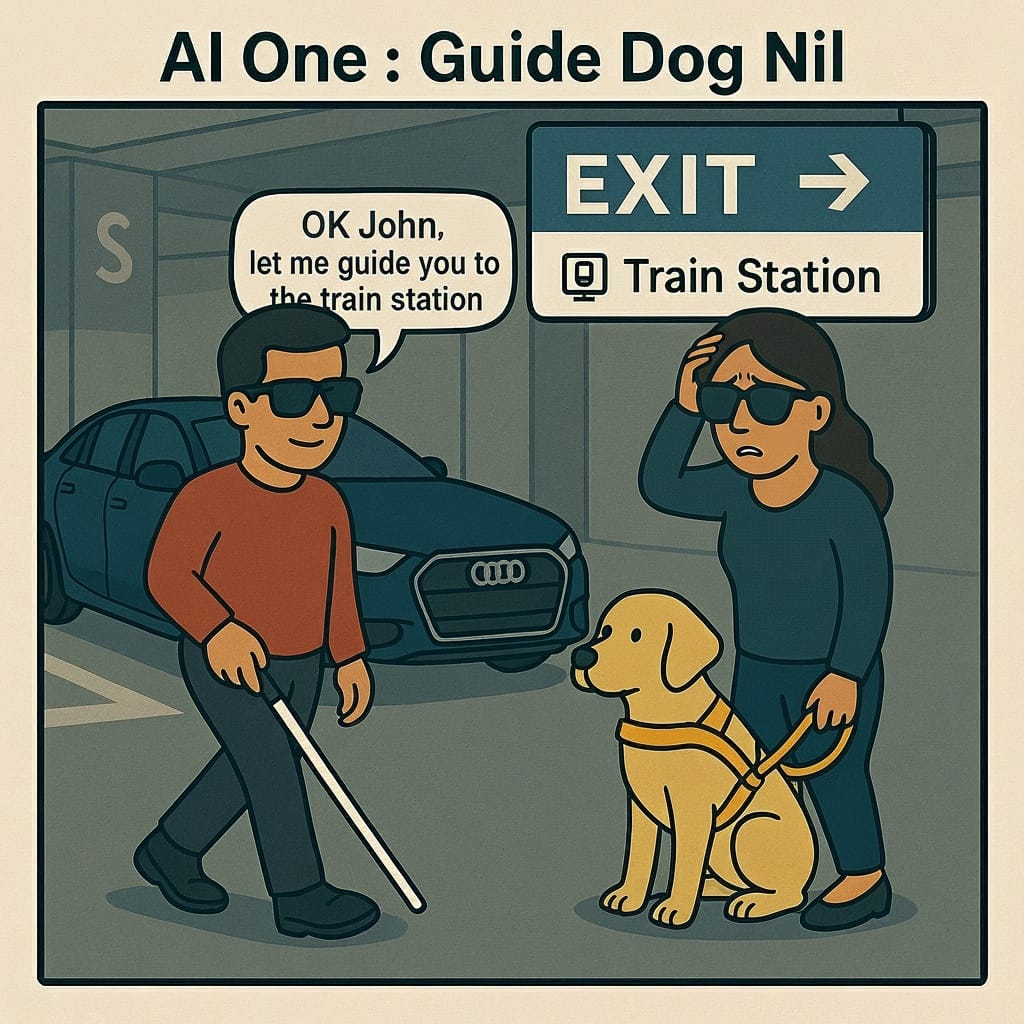Artificial Dog Intelligence
Many times people assume guide dogs have almost super human powers, and certainly extremely super canine powers. The reality is less amazing and once you understand what guide dogs can and cannot do, it becomes clear that already AI wins in some guiding scenarios.

Last week I mentioned Moravec’s Paradox, loosely paraphrased as ‘everything that computers find easy, humans find hard, and vice versa’. This understanding has been around amongst computer scientists and AI researchers for 50 years. One common explanation for this unintuitive observation is that humans have inherited a set of skills for survival in the real world from our biological predecessors. That evolutionary chain has had hundreds of millions of years to refine those mechanisms, such as perception, facial recognition, perambulation and hand/eye coordination. These mechanisms now work so flawlessly, quickly and subconsciously that we don’t even think of them as thought. In contrast, writing this blog post requires very deliberate thought using general purpose circuitry that has had orders of magnitude less evolutionary cycles and is consequently error prone, time consuming and energy sapping. I’m sure most of you feel the same way about the act of reading it.
Fifty years on, computers now easily accomplish some tasks previously thought of as hard for computers, such as sophisticated object recognition and natural language understanding.
But it is still the case that some things guide dogs find easy, AI navigation aids find hard, and vice versa.
Here’s a true account of my experience In an unfamiliar car park:
- Chris: How do I get to the train station?
- Attendant: Just follow the sign
- Chris (patiently waving white stick): Unfortunately as I’m blind I cannot see the sign.
- Attendant (presumably gesticulating): You can’t miss it just beyond the blue Audi over there
- Chris (still patiently) : The thing is, being blind, I cannot see the blue Audi and in any case would not be able to read any sign beyond it.
- Attendant (triumphantly after several seconds deep thought): Well, why don’t you have a guide dog?
- Chris (losing the patient veneer): Just a piece of friendly advice; honestly don’t ever apply for a job as a rocket scientist.
This was a particularly extreme version of the public endowing guide dogs with powers of recognition well beyond any normal dog, such as distinguishing a hitherto unseen car based on it’s manufacturer, and actually being able to read signs.
What guide dogs can do well is follow pre-learned routes, distinguish doors from windows and stop at kerbs – but not safely look left, look right and look left again. If they are as intelligent as our lurcher used to be, they can also smell an intruder, leap into the air at a run to catch a fast moving ball, and distinguish the sound of my wife’s Audi from the sound of our neighbour’s BMW at 200 metres.
In contrast, an AI powered navigation aid can easily recognise particular makes/colours of car and read signs, even upside down or in Ecclesiastical Latin.
My takeaway; if you want a protector, playmate or life companion, dogs win hands down, but if you want a guide that can follow instructions, read maps and interpret signage, then AI is already unsurprisingly well ahead of your dog.